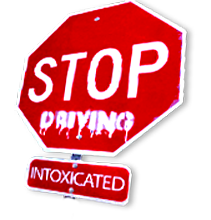Starting in 1980, RID’s work in New York State was particularly productive. Alcohol-related highway deaths fell 23% from 1980 to 1985 in New York, compared to a reduction of only 14% in the nation as a whole in the same time period.
According to a study made in 1991 by then Superintendent of State Troopers Thomas Constantine, in the decade between 1980 and 1990, 6250 motorists did not die on NY’s highways due to the many tough laws initiated and enabled by RID, such as severely limiting plea bargaining to non-alcohol offenses such as reckless driving, bad or bald tires, raising the penalties for repeat offenders and placing STOP-DWI programs in counties, funded by the fines of drunken drivers.
In 1996 a comparative rating of the states by RID, based on the per cent of traffic fatalities where the drivers had blood alcohol levels over .10%, indicated that New York and Utah were the only states to attain A ratings for five consecutive years. This meant that under 25% of the fatalities in these two states were delivered by legally intoxicated drivers, compared to 44% in Texas and 41% in New Mexico. While a large portion of the population in Utah doesn’t drink alcohol, coffee or tea, and is not heavily populated, New York has a huge driving population, bars that can stay open until 4 a.m., and re-open at 8 a.m., and is historically one of the most liberal states in terms of rights of defendants and civil liberties, RID is proud to have led New York to first place in lowering the per cent of fatalities due to drunken driving.
 RID chapters also played an active role in the early reforms in the laws introduced in Connecticut, Georgia, Idaho, Kentucky, Missouri, New Hampshire, New Jersey, Pennsylvania, Tennessee, and Utah.
RID chapters also played an active role in the early reforms in the laws introduced in Connecticut, Georgia, Idaho, Kentucky, Missouri, New Hampshire, New Jersey, Pennsylvania, Tennessee, and Utah.
